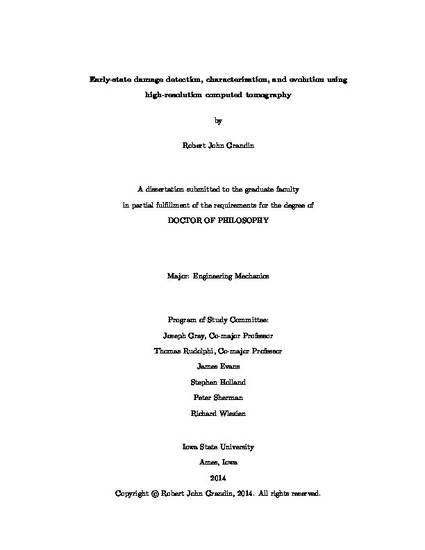
Safely using materials in high performance applications requires adequately understanding the mechanisms which control the nucleation and evolution of damage. Most of a material's operational life is spent in a state with noncritical damage, and, for example in metals only a small portion of its life falls within the classical Paris Law regime of crack growth. Developing proper structural health and prognosis models requires understanding the behavior of damage in these early stages within the material's life, and this early-stage
damage occurs on length scales at which the material may be considered ``granular'' in the sense that the discrete regions which comprise the whole are large enough to require special consideration.
Material performance depends upon the characteristics of the granules themselves as well as the interfaces between granules. As a result, properly studying early-stage damage in complex, granular materials requires a means to characterize changes in the granules and interfaces. The granular-scale can range from tenths of microns in ceramics, to single microns in fiber-reinforced composites, to tens of millimeters in concrete. The difficulty of direct-study is often overcome by exhaustive testing of macro-scale damage caused by gross material loads and abuse. Such testing, for example optical or electron microscopy, destructive and further, is costly when used to study the evolution of damage within a material and often limits the study to a few snapshots. New developments in high-resolution computed tomography (HRCT) provide the necessary spatial resolution to directly image the granule length-scale of many materials. Successful application of HRCT with fiber-reinforced composites, however, requires extending the HRCT performance beyond current limits. This dissertation will discuss improvements made in the field of CT reconstruction which enable resolutions to be pushed to the point of being able to image the fiber-scale damage structures and the application of this new capability to the study of
early-stage damage.
Available at: http://works.bepress.com/robert_grandin/3/
